In the world of big beef dinners, the Dry-Aged Reverse Seared Prime Rib Roast is a smoked, culinary masterpiece that embodies sophistication and flavor. In this recipe, we'll explore the art of dry aging and reverse searing to raise the prime rib roast to new levels of tenderness and taste. Get ready to indulge in the rich flavors of a perfectly cooked prime rib, as we guide you through the steps of mastering the reverse-searing technique.
Dry aging is a technique that significantly enhances the flavors and tenderness of beef. Smoking the roast first adds a lot of flavor and then the reverse sear locks in the flavor, producing a roast that is tasty and juicy. Combined, these techniques result in a prime rib roast with a perfect crust and a melt-in-your-mouth interior.
Join us as we unlock the secrets to achieving a perfectly cooked prime rib roast that will redefine your expectations of a classic prime rib. If you like Lawry's prime rib recipe, you will love this.

This a wonderful dish to serve for your Christmas dinner or a special occasion meal. Serve with au jus and your dishes like creamed corn, garlic mashed potatoes and Yorkshire pudding.
This was inspired by my recipes for Prime Beef Tenderloin Reverse Seared, Filet Mignon with Bone Marrow Butter and Smoked Brisket & Burnt Ends.
Also, see my post Best Beef: A Comprehensive Guide to Popular Cuts of Steak.
Jump to:
Why Dry-Aged?
Dry aging a prime rib roast enhances the flavor and texture of the meat. By exposing a prime rib roast to a temperature-controlled environment for an extended period, natural bacteria and enzymes develop. These work to break down tough connective tissue in the muscle fibers, resulting in a more tender and succulent roast.
Additionally, the process allows for moisture to evaporate, which concentrates the myoglobin in the meat and intensifies its beefy flavor profile. As the dry aging period progresses, typically 28 - 45 days, unique and complex flavors develop, further enhancing the overall taste of the roast.
Where to Find a Dry-Aged Prime Rib Roast
For many years, dry-aged prime rib was reserved for the restaurant industry and could only be found at high-end steakhouses. Fortunately, that is no longer the case. Dry-aged prime meat is now available online as well as many supermarkets and butcher shops. I live in Austin, Texas and my local market has dry-aged prime rib roasts all year round. You can always dry age a roast yourself if you have enough space in your refrigerator. However, it is certainly easier to buy a roast that has already been dry-aged and trimmed. The aging process produces a tough, dried out layer on the outside of the roast that is about ⅛" - ¼" thick and must be removed before smoking. Personally, I prefer to let someone else do this before I bring it home.
Can you Taste the Difference?
Is there really a difference between prime rib and dry-aged prime rib? Oh, there is absolutely a difference. Dry aging removes some of the water in the roast and intensifies the beefy flavor. It also tends to tenderize the meat a bit so the overall texture of dry-aged beef is also different. I always try to use dry-aged beef for any special occasion.
Why Reverse Seared?
There is a bit of science to this. Use a reverse sear when cooking a roast in a smoker. You can either sear first or reverse sear if the roast is going to be cooked in an oven. The difference is the smoke. Searing burns and seals the very outer portion of the roast and that prevents it from picking up smoke flavor. That's why I smoke it first, then sear it afterwards. I want the roast to pick up a more smoke flavor. Since I did not use any wood chips in the smoker, only charcoal, there was very little smoke for the roast to pick up in the first place. There are many pit masters who will say that a reverse sear is the only way to go because it produces a juicier, better tasting roast.
Ingredients
- Boneless rib roast
- Kosher salt
- Black pepper
- Garlic
- Canola oil
- Red wine
- Butter
- Flour
- Worcestershire sauce
- Beef stock
See Reverse-Seared Dry-Aged Prime Rib recipe card for quantities.
Instructions
Trim It and Tie it Up
Any prime rib roast will likely need a bit of trimming before cooking. Remove any traces of silver, dark brown areas (from the aging process) or thick fat that will not render.
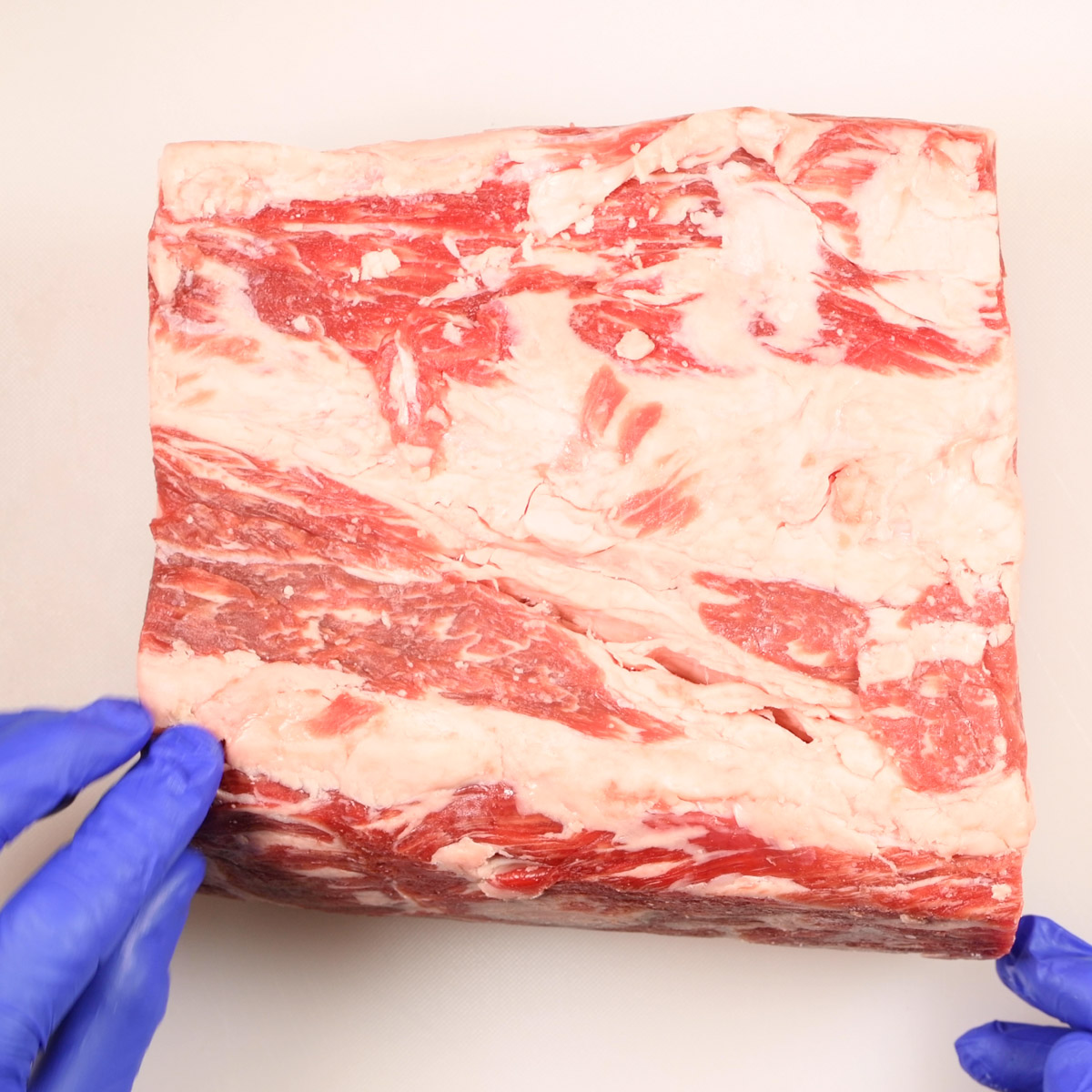
Raw prime rib roast.
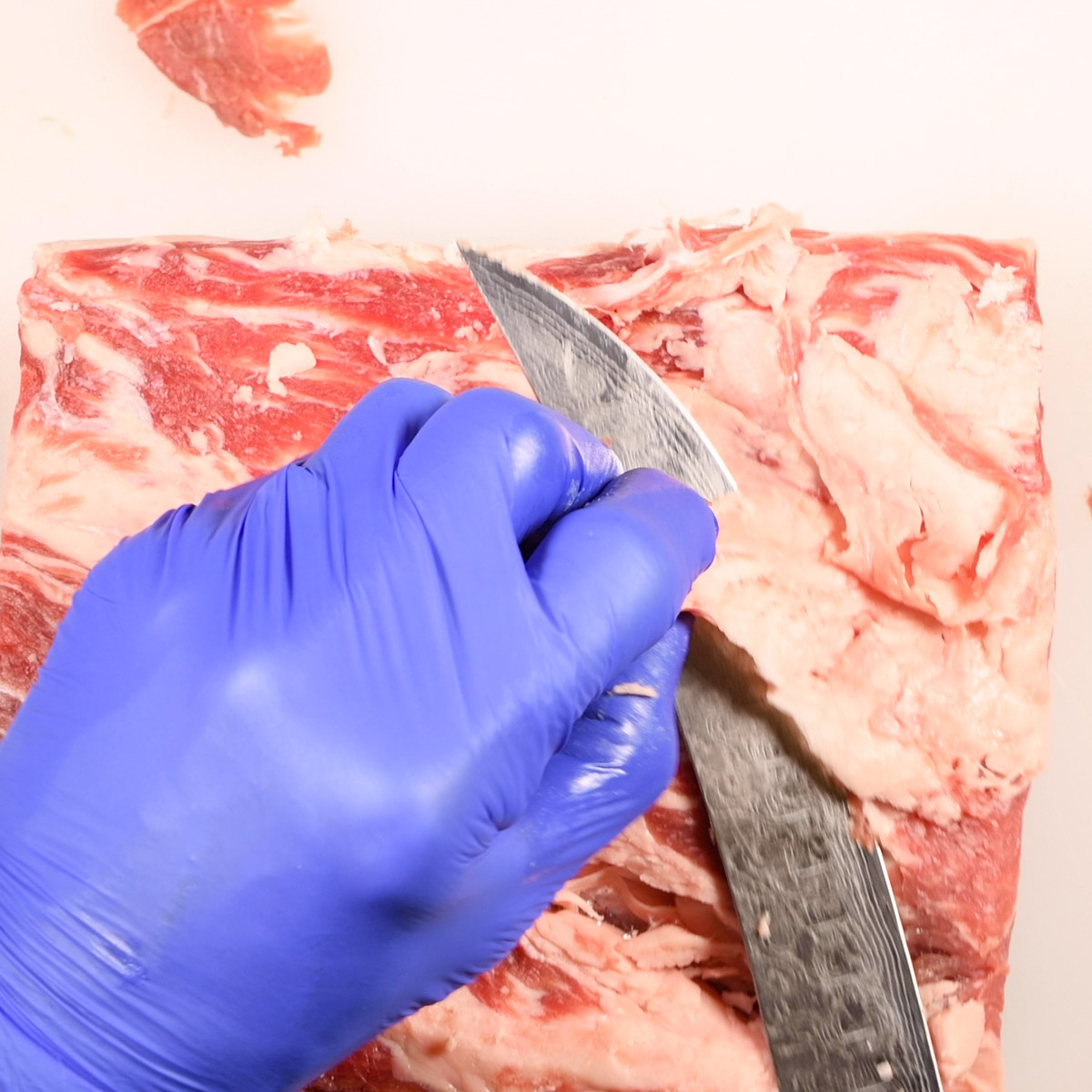
Trim excess fat from the roast.
A prime rib roast is not round but rather somewhat flat and oblong. Cooking a prime rib roast that is flat will result in uneven cooking and the real possibility of over cooking. It is much easier to overcook a roast 3" across than one that is 6" across. If your goal is a roast that is medium rare, a flat roast will end up having a relatively narrow band of medium rare meat right down the center.

A prime rib roast is oblong in shape.

Reshape the roast into a round roast that will cook more evenly and maximize the area that is medium-rare. Reshaping a roast is easy to do, just tie it up with some kitchen string and pull each loop tight.
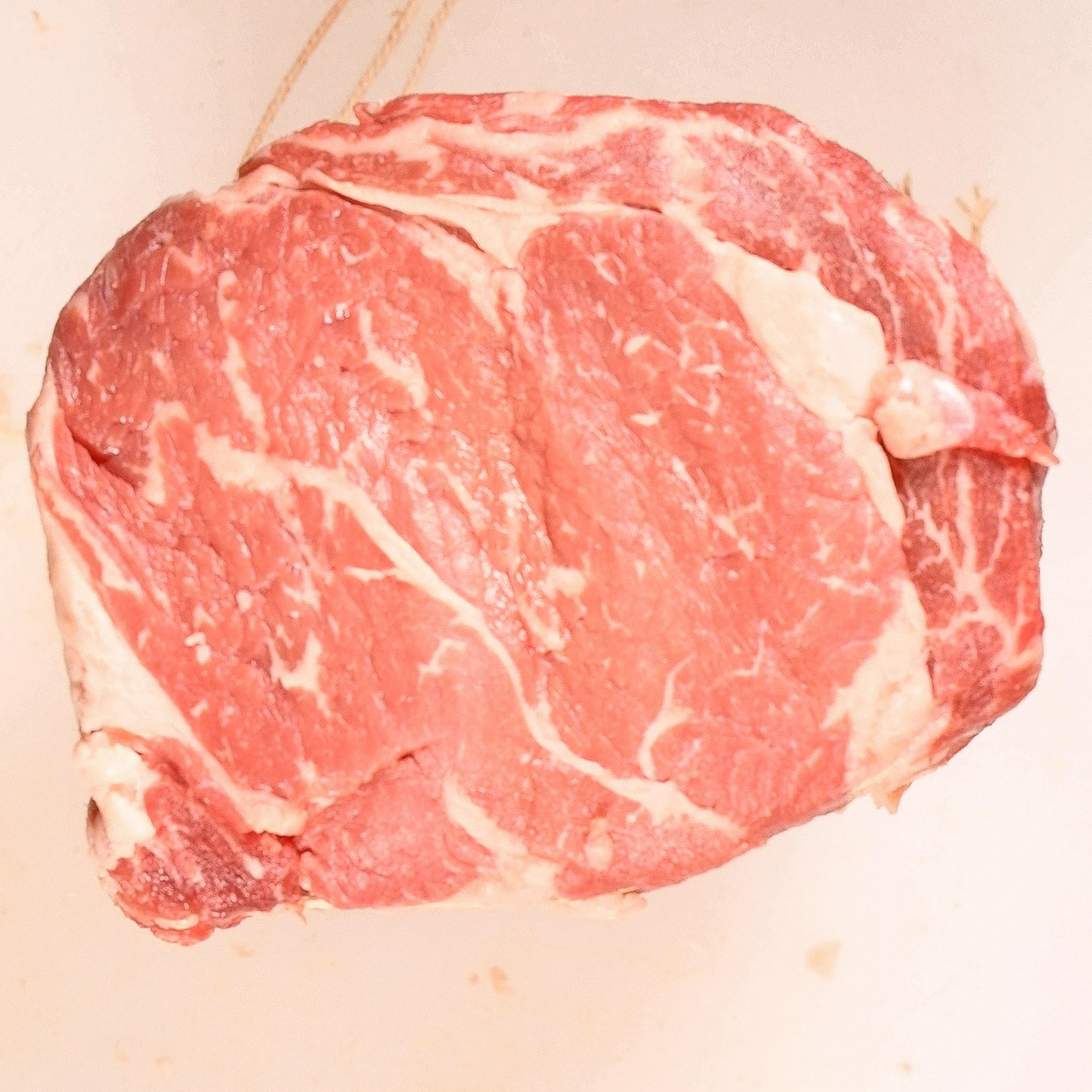
The result will be a round roast that will cook evenly.
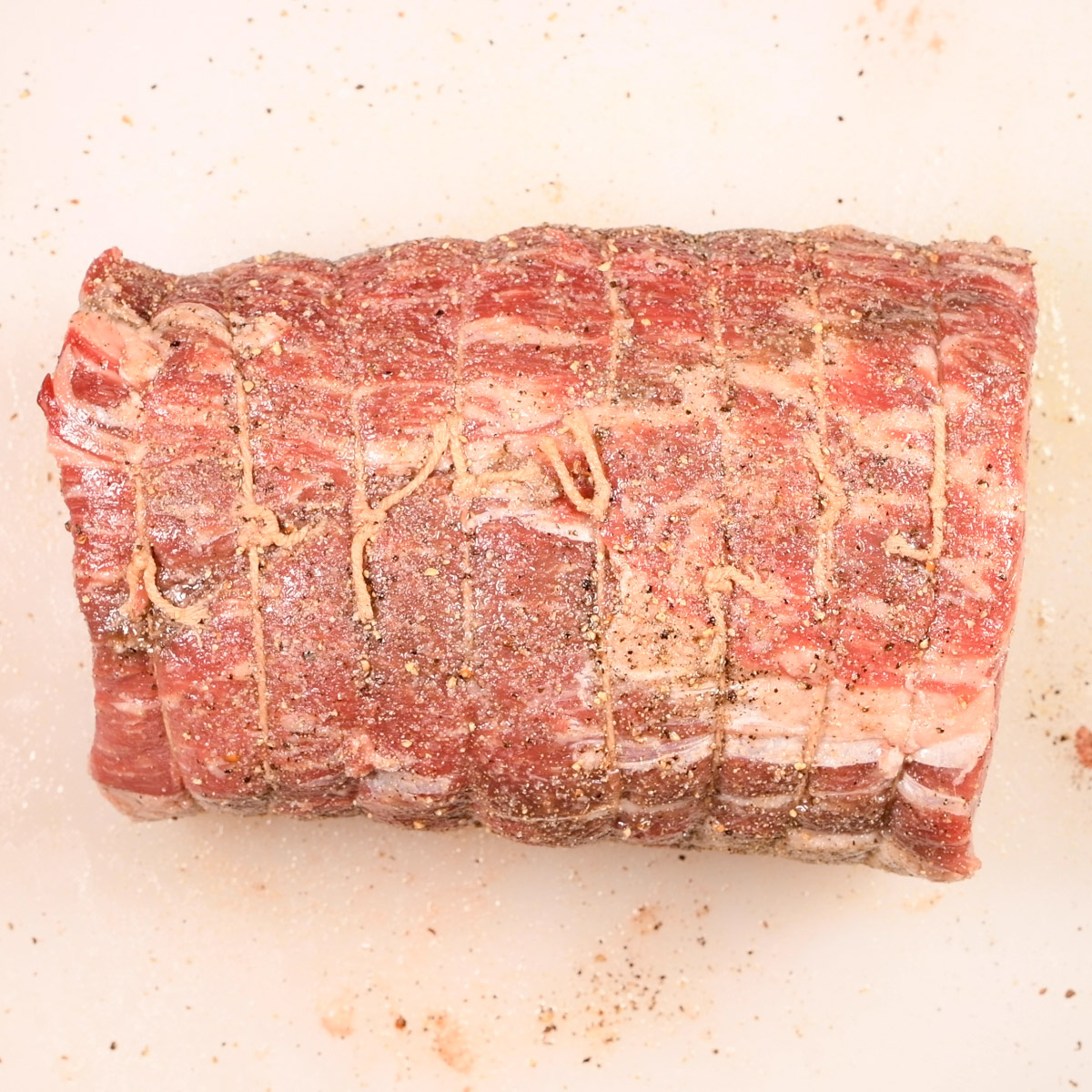
The seasoning mixture is simple. Mix some kosher salt, black pepper and garlic powder in a small bowl. Then sprinkle this mixture over the entire roast.
Smoke it Low and Slow
If the roast has a fat cap, cook it fat side up. Cooking time is 30 - 40 minutes per pound at 250˚F to an internal temperature of 125˚F for medium-rare using an instant-read thermometer inserted into the center of the meat. The 5 pound prime rib in this recipe smoked for 3.5 hours. A better alternative is to cook the roast using a thermometer like the Fireboard that can stay in the roast while it is cooking.
This roast was cooked inside a Kamado Joe over lump charcoal only. There were no wood chips or chunks added. For my family, a hint of smoke is all this roast needs. When I have cooked a prime rib with wood chips the resulting smoky flavor was over powering. My vote is to use good quality hardwood lump charcoal and nothing else.
Let it Rest
Remove the roast from the smoker when it is done cooking and tent it with aluminum foil and let it rest on a wire rack placed over a large skillet for 15 minutes. While it is resting, reconfigure the smoker for direct heat at 500°F.
It is important to let it rest the full 15 minutes. A roast that has not rested will leak out all of its juice when sliced, leaving a bunch of medium-rare bone-dry meat. Be patient, let it rest, and all that liquid will be reabsorbed and will produce a gorgeous and juicy roast.
Make the Gravy
To prepare the beef gravy for the prime rib, use the drippings that were collected in the skillet while the roast was resting. After 10 minutes of resting, move the wire rack with the roast to a foil covered jelly roll pan for the final 5 minutes of resting.
Heat the drippings that are in the skillet over medium heat. Add the red wine and deglaze the pan by scraping up any brown bits stuck to the bottom. Allow the mixture to cook until most of the red wine has reduced. Next, add the butter and flour to the skillet and stir to until they form a smooth mixture, about 1-2 minutes. This is creating the roux. Next, gradually add the beef stock into the roux. Whisk the mixture constantly while adding the beef stock to ensure that there are no lumps. Next, whisk in the Worcestershire sauce. Adjust the seasoning with salt as needed, but taste it first. Even low-sodium beef stock can be salty.
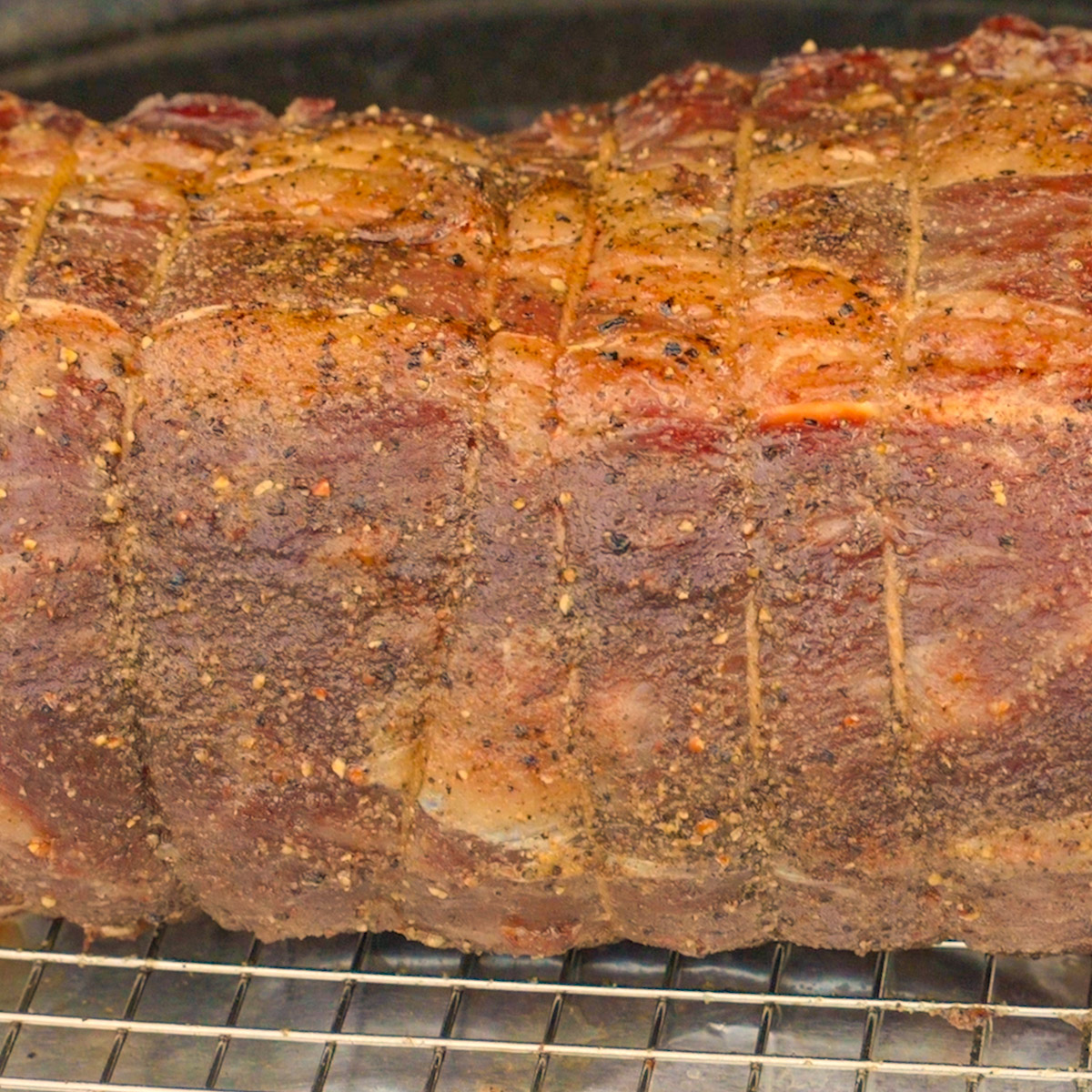
Sear and Serve
Sear the roast over direct heat to form a nice crust, taking approximately 1 minute per side for a total of 4 minutes. There is no need to rest it again after searing, it has already rested.
Finally, slice the roast into ½" slices and serve it with Au Jus, creamed horseradish, and some popovers for a delightful meal.

Substitutions
Dry-aged rib roasts can be hard to find. If a dry-aged roast is unavailable, buy the best quality that you can find. A prime roast will have a lot more marbling than a choice roast and that translates into a more flavorful, juicier roast.
Equipment
The roast in this recipe was cooked inside a Kamado Joe using a Fireboard temperature control device. A tool like the Fireboard is essential when cooking low and slow on a Kamado Joe, Big Green Egg or any other ceramic cooker. It allows you to dial in the exact temperature that you want from your phone and it does the rest. The best part is that my Fireboard will maintain the temperature that I set, plus or minus a few degrees, for hours and hours. If you are not familiar with the Fireboard, watch my video review below.
Storage
Store leftover prime rib in an airtight container in the refrigerator for up to 3 days. Reheat in an oven at 250°F until heated through.
Top Tip
Remove the roast from the refrigerator 90 minutes before cooking. This allows the roast to come up to room temperature a bit before going into the smoker. This is important for even cooking. If a cold roast is put into the smoker, the outside will be overdone by the time that the inside is medium rare.
Final Thoughts
As you carve into a perfectly cooked slice of Dry-Aged Reverse-Seared Prime Rib, enjoy the combination of flavors and tenderness that come from dry aging and reverse searing. From the crispy exterior to the buttery, melt-in-your-mouth interior, each delicious bite is a reminder of what a little patience and ingenuity can produce in the kitchen. Enjoy!
Related
Looking for other great recipes like this? Try these:
Pairing
These are my favorite dishes to serve with this recipe.
📖 Recipe
Reverse Seared Dry-Aged Prime Rib Recipe
Ingredients
Equipment
Method
- Select a prime rib roast from your butcher that has been dry-aged 28 - 35 days. Trim off excess fat and any areas that appear dried out.
- Remove the roast from the refrigerator 90 minutes before cooking. Tie 6 - 8 loops of string around the roast gently pulling the roast into a round shape.
- Rub the roast with oil and season with salt, pepper and garlic powder. Do not season the ends of the roast.
- Setup your smoker for indirect heat at 250°F using good quality lump charcoal. Place the roast on a raised rack over a sturdy jelly roll pan and cook to an internal temperature of 125°F for medium rare, about 30 - 40 minutes per pound.
- Remove the roast, tent with foil, and allow to rest for about 15 minutes. Reconfigure the smoker for direct heat at 500°F. Sear the roast over direct heat to form a nice crust, about 1 minute per side, 4 minutes total. Slice ½" slices and serve with Au Jus, creamed horseradish and some popovers. Enjoy.



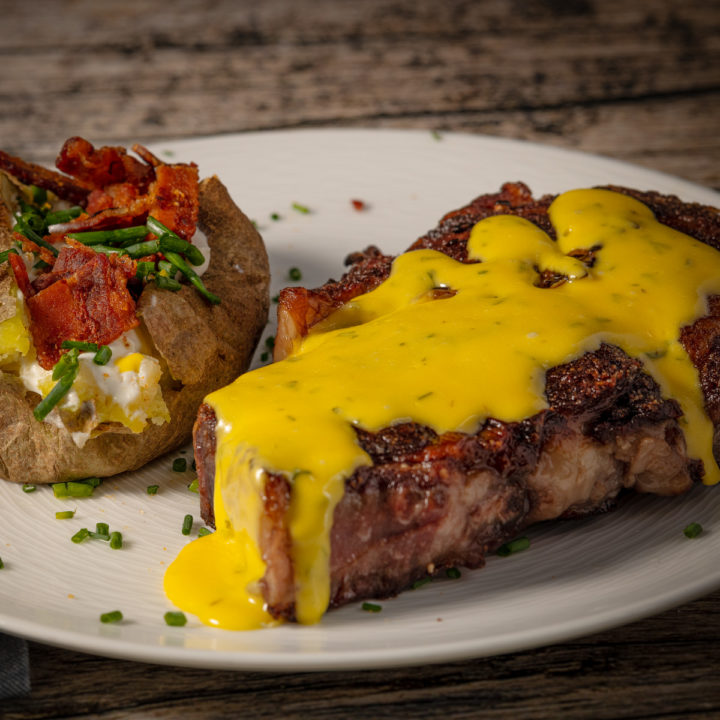
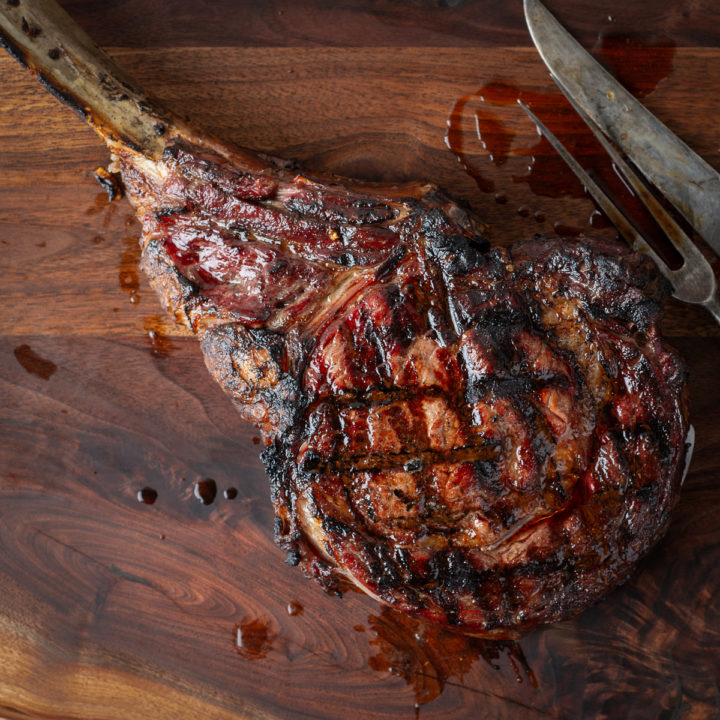
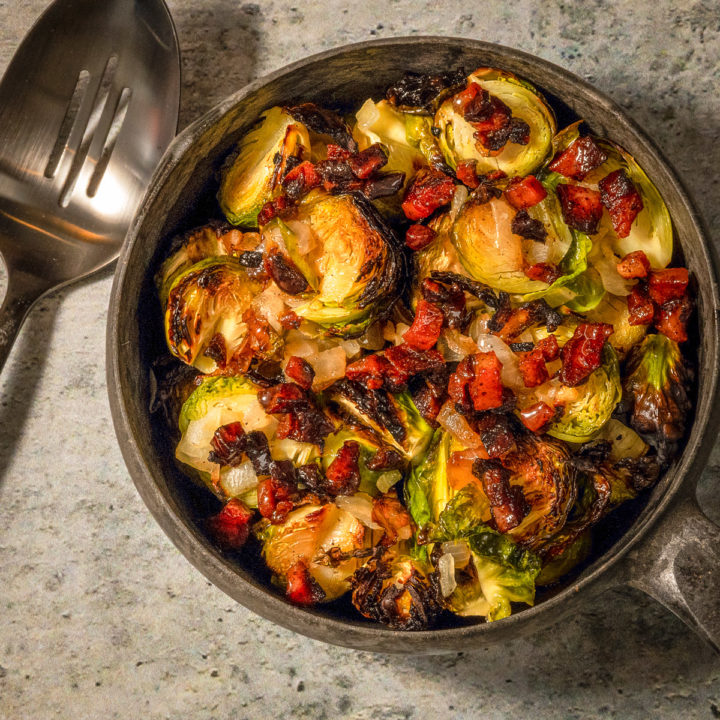
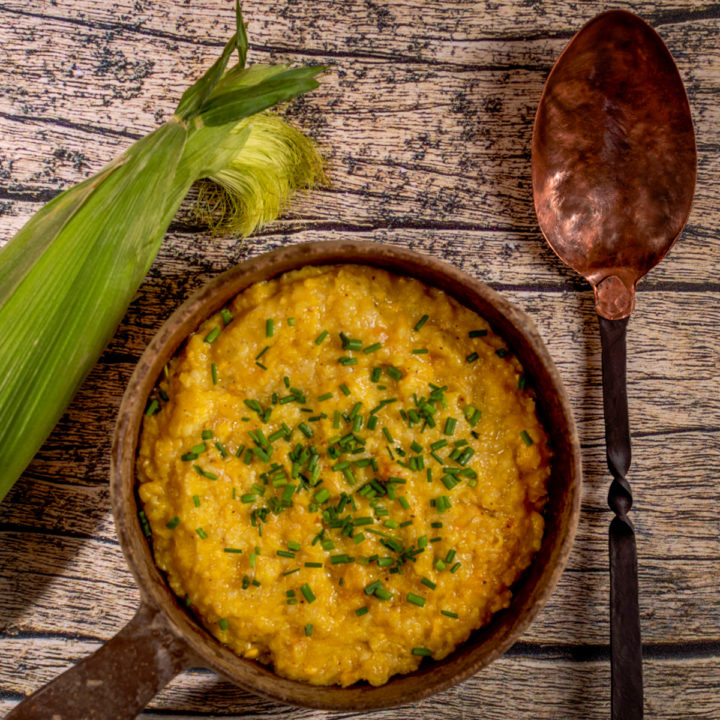
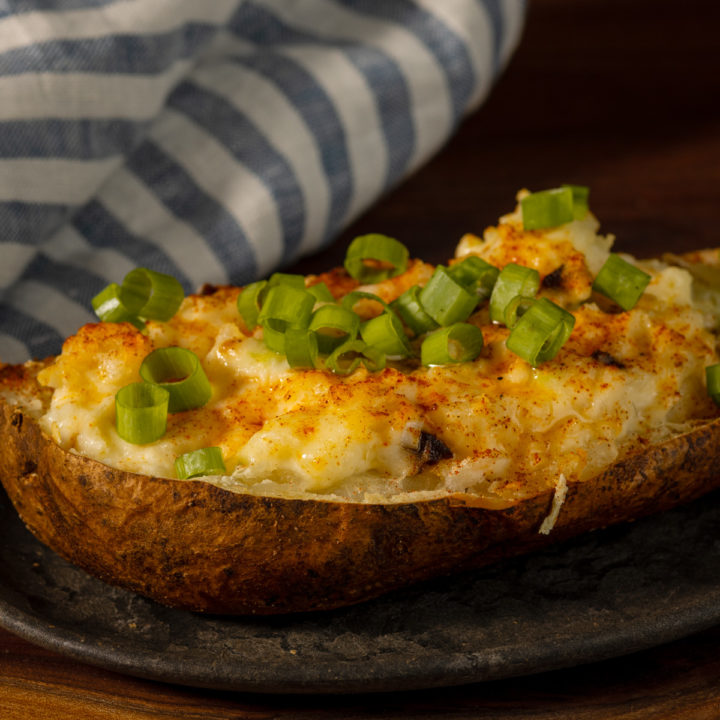
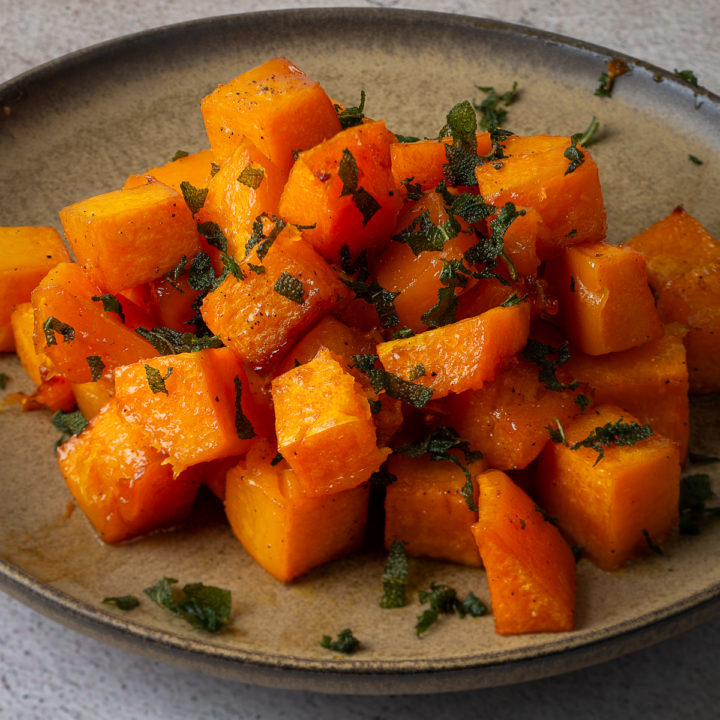
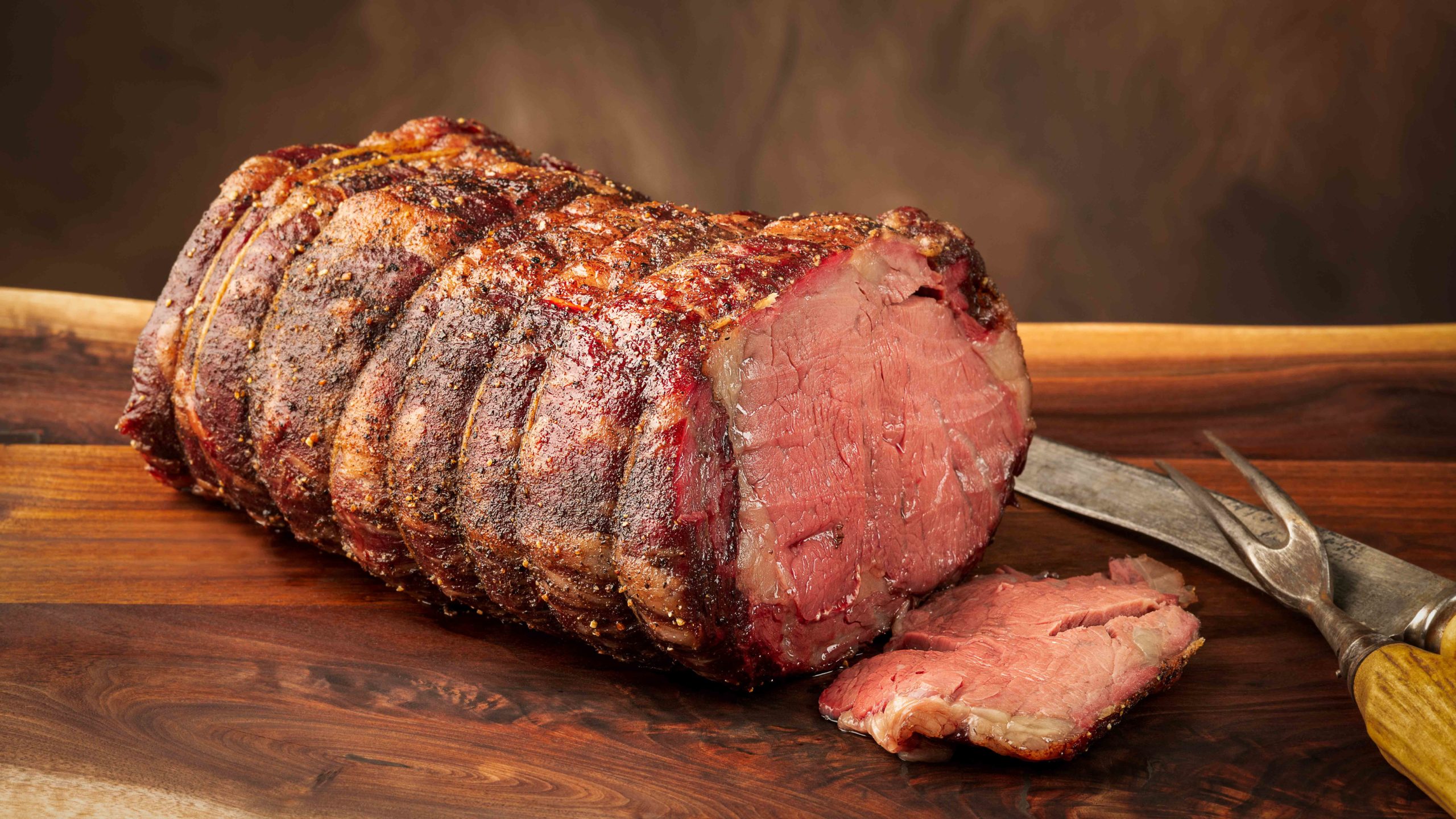
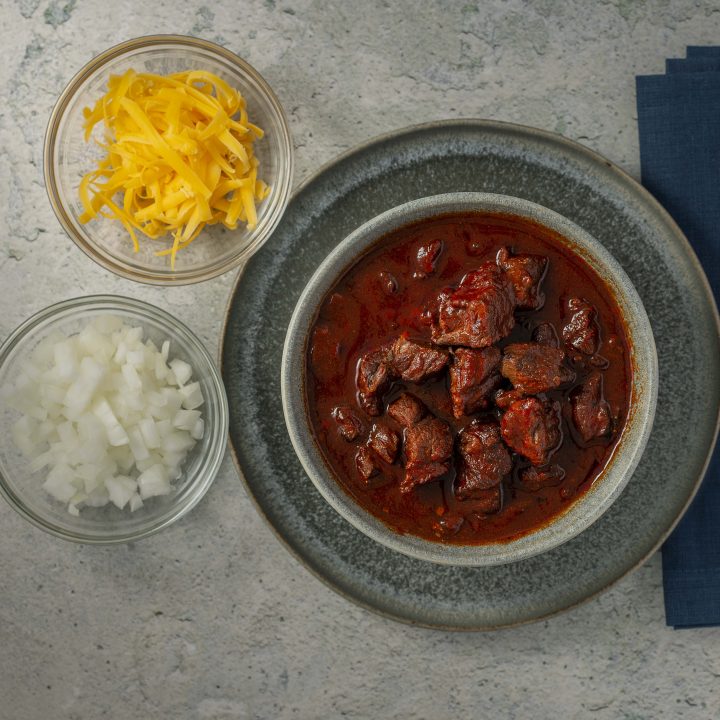
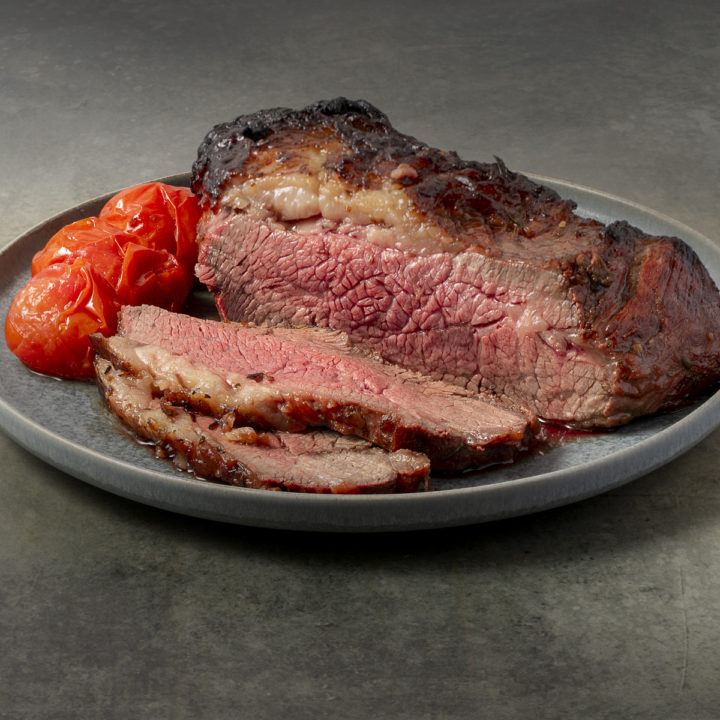
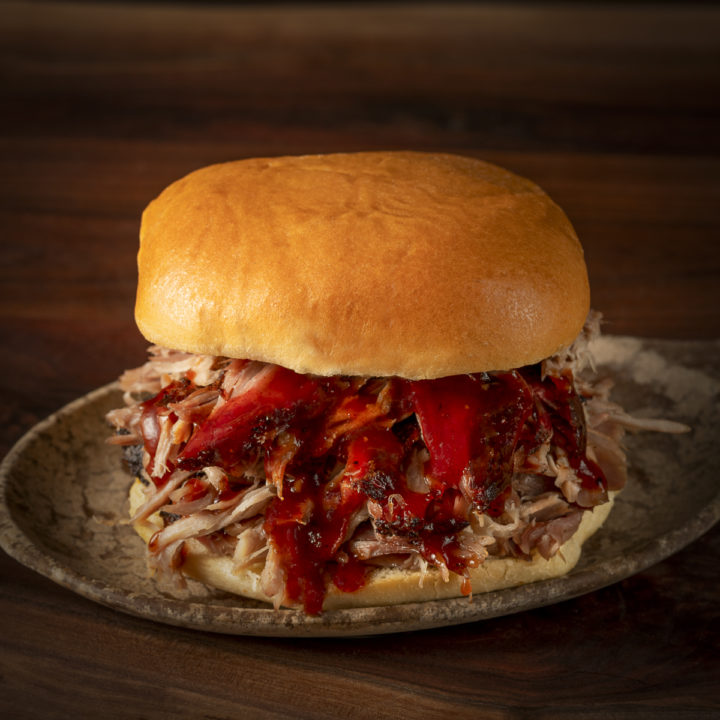
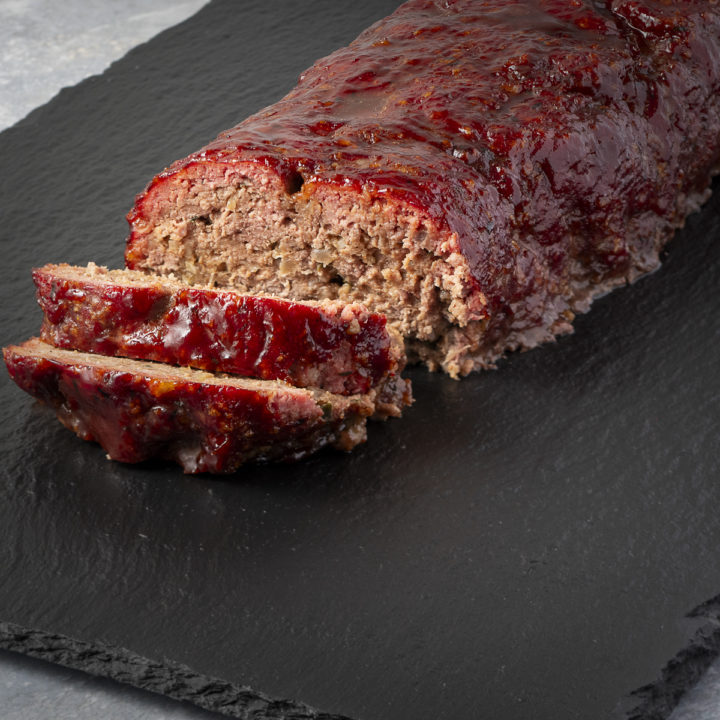
Leave a Reply